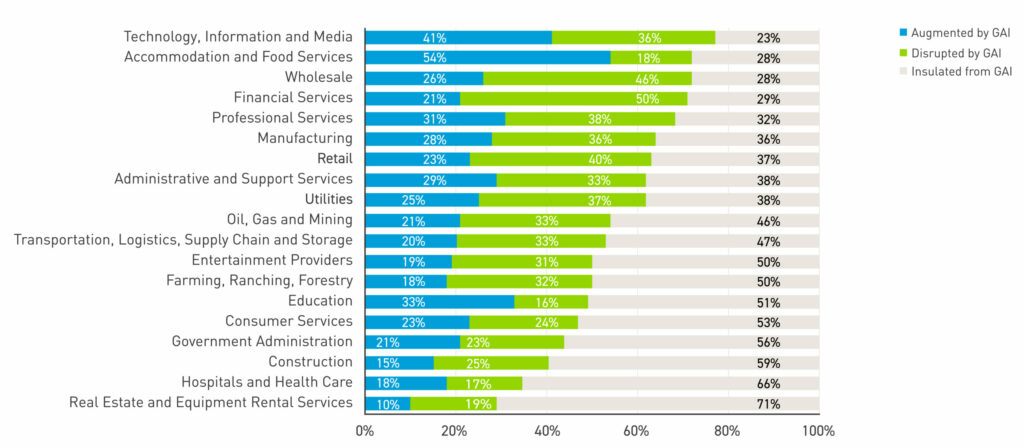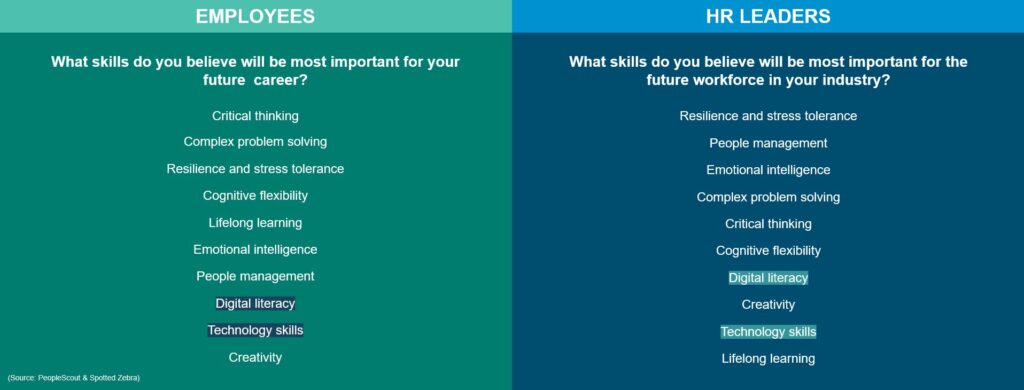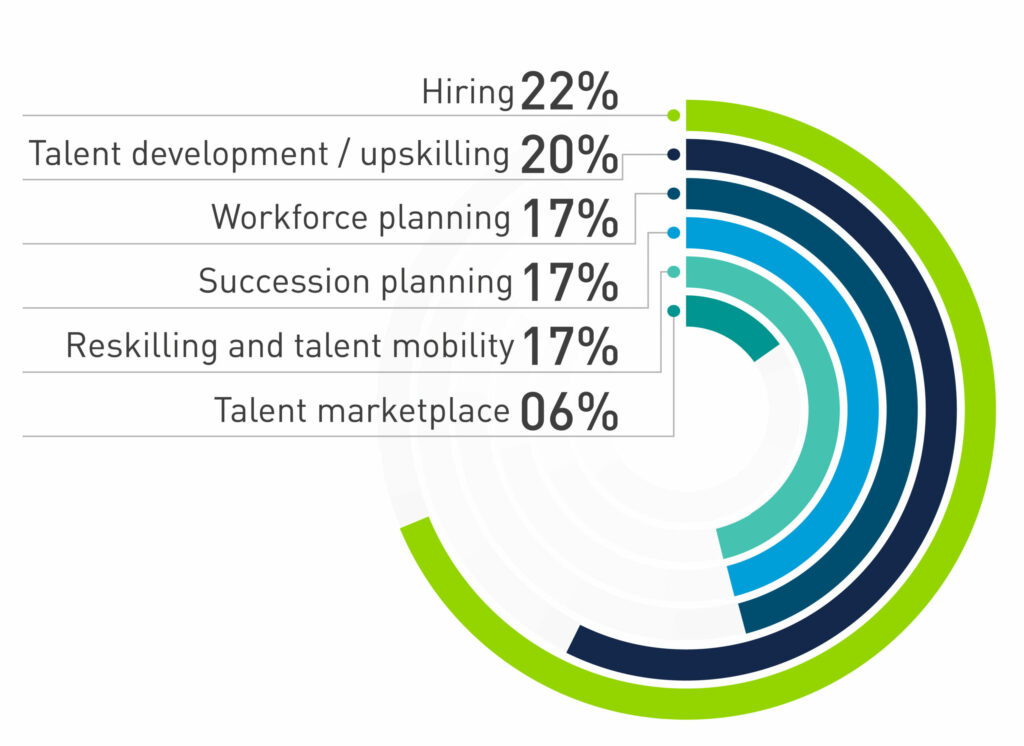By Simon Wright, Global Head of Talent Advisory Consulting
Earlier in 2023, we highlighted six key areas that would impact how companies attract, retain and develop talent. With the year wrapping up, we’re revisiting these critical topics to examine what transpired in the talent landscape and what may be on the horizon for 2024.
From closing persistent skills gaps to offering more work flexibility, companies continue to face pressing talent challenges. Economic fluctuations have led some employers to pull back on hiring and remote work, while others doubled down on upskilling programs and expanded their talent pools.
In the following review, we trace how the 2023 predictions played out amidst an uncertain economy and ever-evolving workplace.
1. Closing Skills Gaps
What We Said:
With rapidly evolving technologies requiring new skills, companies are making upskilling and reskilling their workforce top priorities. Most employees feel unprepared for future jobs, so it’s important for organisations to invest in development to retain employees, build confidence, and help them adapt to changing business priorities.
What We Saw:
Skills gaps, and the upskilling and reskilling that must happen in order to close them, are still very much top of mind for HR leaders. The economic slowdown has increased candidate availability, so in the short term there has been more tech talent available, for example. But long term, there is still a skills crisis, and organisations are largely yet to shift to skills-based practices.
We’ve seen front-runner organisations investing in skills development initiatives to grow the workforce they need. For example, Amazon’s program Career Choice is part of a wider initiative to invest over $1.2 billion by 2025 to provide 300,000 U.S. workers with the training they need to pursue careers in whatever field they choose.
The average shelf-life of skills is now less than five years. So, the skills conversation is only going to get louder. If the World Economic Forum’s prediction is correct that over 85 million jobs will go unfilled by 2030 due to a lack of skilled talent, resulting in $8.5 trillion (USD) in annual lost revenues, then this is the most pressing issue facing talent leaders today.
2. Offering More Flexibility
What We Said:
Amidst the acceleration of remote work, companies are facing mounting pressure to offer greater location and schedule flexibility to attract and retain talent.
What We Saw:
The return to the office debate is still raging. Employees want greater flexibility, but more and more employers are pulling people back into the office. Even Zoom, the video communications company that helps us all work from home, announced in August that it will start tightening its restrictions on remote work. Amazon, Disney and more have all reduced remote-work days.
While power has shifted back to the employer, this issue won’t go away. If you really think your employees love coming to the office just because you’ve introduced free snacks, you don’t understand what flexibility means to your workers. Flexibility is not just about where you work. True flexibility is about giving more autonomy to your employees about the kinds of work they do and when and where they do it.
3. Shifting to Contingent Workers
What We Said:
As the desire for work flexibility drives more professionals into freelance and contract roles, organisations are increasingly utilising these temporary workers to fill pressing skills gaps and specific project needs while maintaining financial and strategic workforce flexibility.
What We Saw:
The economic uncertainty this year has made organisations less likely to make permanent hires. Plus, freelancers, consultants and contractors have developed into an essential part of the workforce as skills requirements become more complex. Maintaining a mix of traditional and flexible talent is crucial for businesses to stay ahead in today’s dynamic climate.
With the enormous interest in ChatGPT and generative AI, it’s not a stretch to think the pace of business transformation will only accelerate in 2024. And demand for contingent workers will continue to rise. Indeed, according to Ceridian, 65% of organisations plan to increase their reliance on contingent workers in the next two years.
4. Tapping into New Talent Pools
What We Said:
Facing workforce shortages, organisations are expanding their applicant pool by targeting untapped talent like Generation Z, unretiring Baby Boomers and boomeranging ex-employees.
What We Saw:
In 2023, the UK government launched a “returnership” initiative to inspire those over the age of 50 to come back to work. The goal is to help older workers retrain and learn new skills, providing them with a roadmap back to the workplace and encouraging organisations to hire them.
We also saw organisations turn their attention to the talent pool sitting right under their noses. Internal mobility was a hot topic for talent leaders in 2023 as recruiting new talent became more and more challenging and costly.
We were also reintroduced to the concept of labour hoarding, a term coined in the 1960s. This practice refers to organisations forgoing head-count reductions now, so they’re prepared when business picks up. In an era of labour shortages, organisations are keeping their workforces to avoid the risk of losing good talent to a competitor and to skip the costs associated with hiring again.
5. Rallying Around the Mission
What We Said:
Our Inside the Candidate Experience research revealed that for 50% of candidates, an organisation’s mission and purpose are a key influence on their decision to apply. Yet, when evaluating career sites, we found details on the mission or purpose of the organisation less than half (48%) of the time.
What We Saw:
Employees are more dedicated than ever to finding an employer that shares their values and offers them a sense of purpose. However, workers within organisations that lack a sincere commitment to improving the community and supporting climate initiatives often report disengagement.
According to Gallup data from June 2023, 59% of global workers say they’re not engaged at work. This is worrying as we move into a labour market that favours employers, as they will inevitably become less motivated to keep their employees engaged. Yet, a key reason why someone quiet quits hasn’t changed—and it’s down to a lack of connection to the company culture and purpose.
A lack of engagement in the workforce is a leading factor in the productivity vacuum. Going into 2024, my hope is HR leaders will go beyond simply thinking about wellbeing to view their employees as whole people—not just workers. Updating your employee value proposition (EVP) to be more human-focused can help strike the right balance between compassion and business interests. Shifting to a Personal Value Proposition (PVP), and customising offerings so that each employee feels valued as an individual, can help in fostering a positive emotional connection.
Learn how to evolve your EVP to a human-centric PVP and increase productivity 23%.
6. Engaging Outside Talent Acquisition Solutions
What We Said:
Despite economic uncertainty, business leaders foresee revenue growth in the coming year, but may need flexible and agile workforces achieved through contingent staffing to meet their top challenge of filling critical roles amidst a shifting talent landscape.
What We Saw:
We saw an increase in talent acquisition teams looking for quick wins. At PeopleScout, we are investing heavily in talent solutions designed to boost agility for employers of all sizes and across all industries. This includes offerings like our Amplifiers and PeopleScout Accelerate solutions launched this year.
Amplifiers provide modular, targeted recruitment process outsourcing tailored to specific hiring needs. Clients can implement RPO support for just part of the talent acquisition lifecycle, whether that’s filling the top of the hiring funnel with high volumes of qualified talent or gaining deeper insights to guide strategic workforce decisions. This “as-needed” model is ideal for companies that want to remain nimble.
Additionally, our PeopleScout Accelerate technology-enhanced RPO solution is purpose-built for fast-scaling organisations that need to ramp up recruiting quickly. We can implement PeopleScout Accelerate in just two weeks, providing access to our proven recruitment methodologies and our industry-leading Affinix talent acquisition technology suite right out of the gate.
As we close the books on 2023, it’s clear the talent landscape continues to shift in new and uncertain directions. In the coming year, agile organisations that invest in the longevity of their workforce and truly connect with their people on a human level will maintain an edge. Rather than recoiling from change, forward-thinking talent leaders have an opportunity to guide their organisation’s evolution. Now is the time to build workforces that can pivot on a dime while staying true to their purpose.






